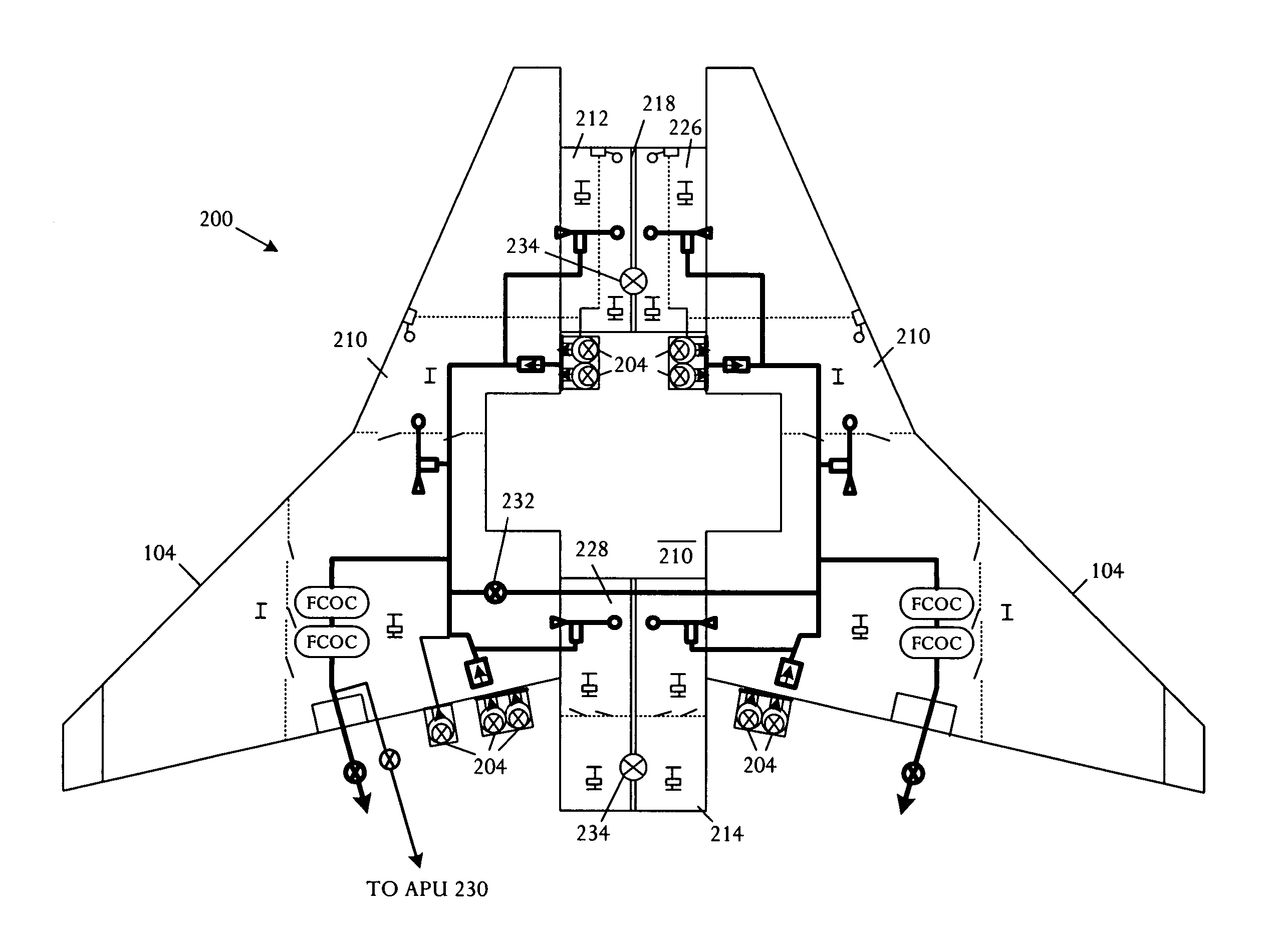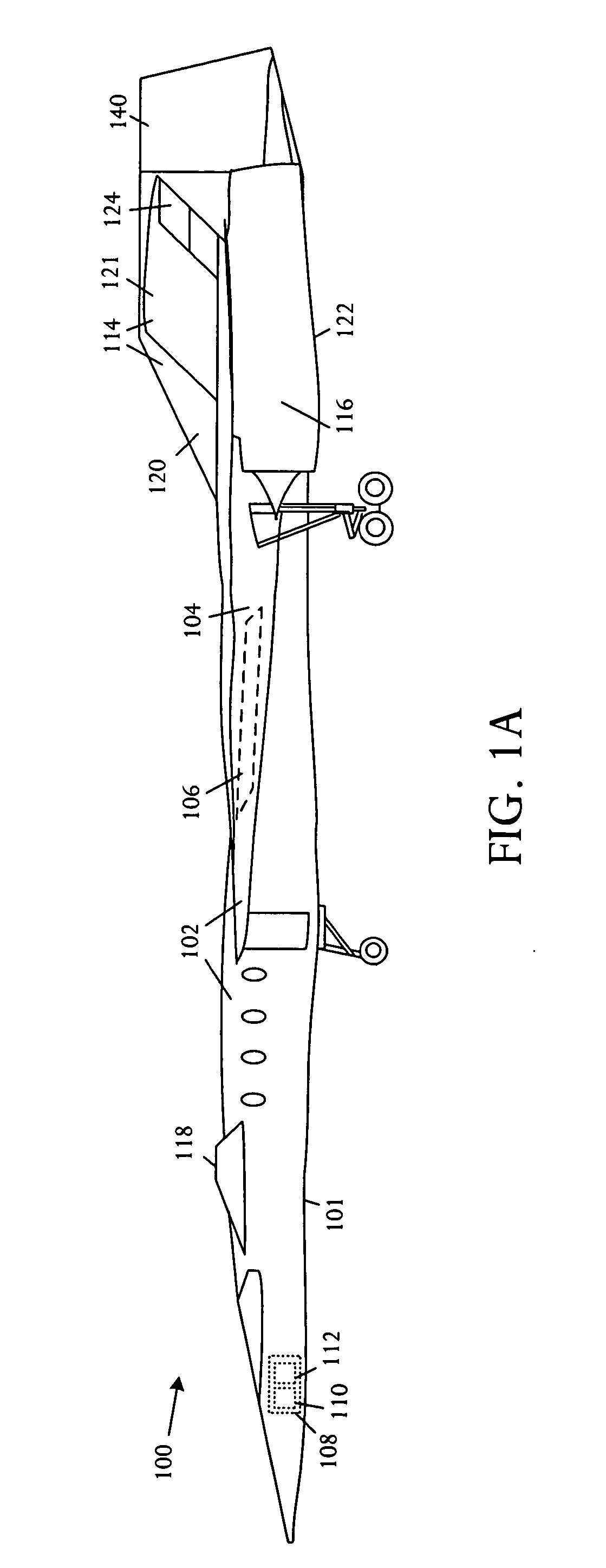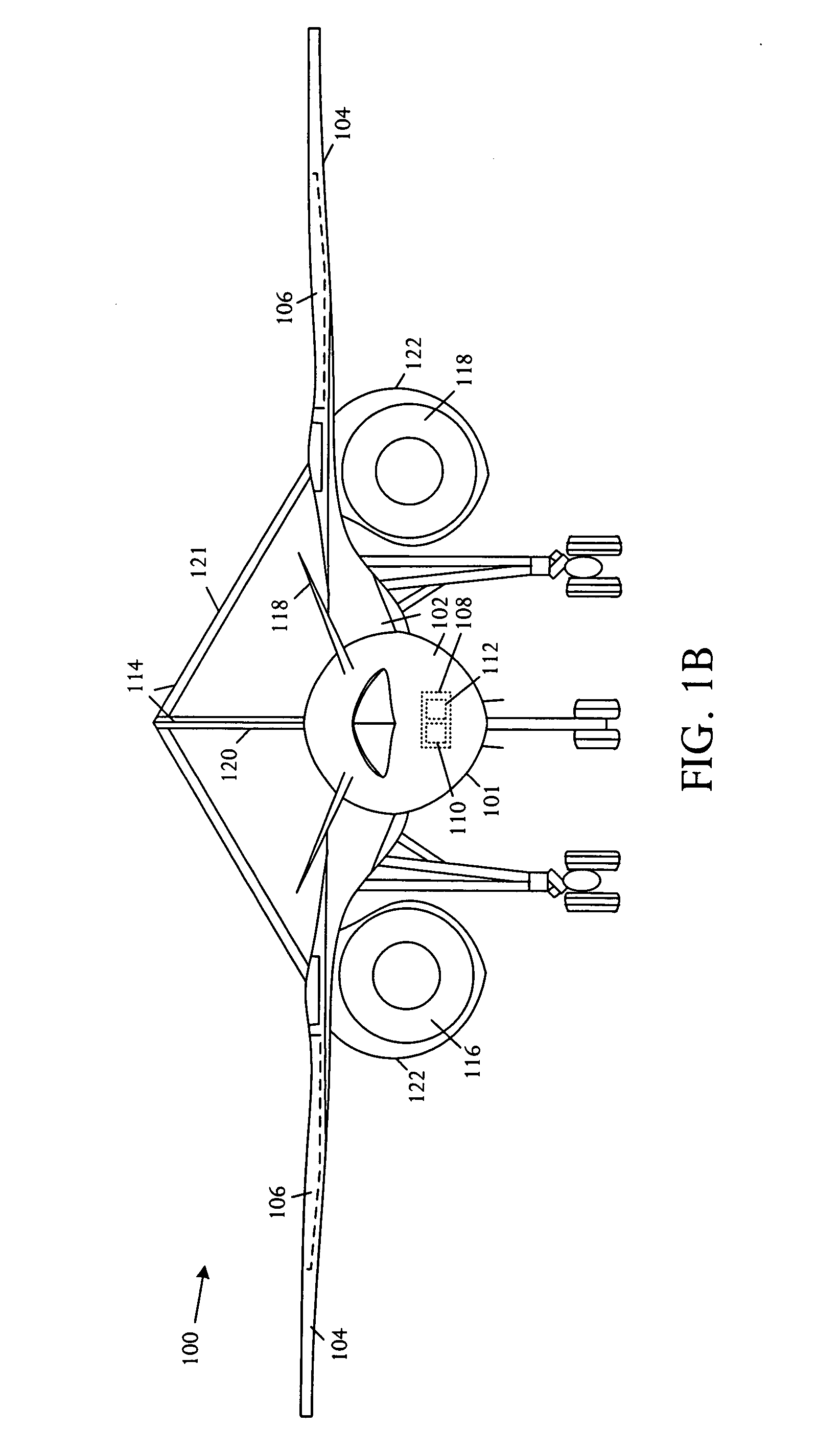Aircraft with active center of gravity control
a technology of center of gravity and aircraft, applied in process and machine control, instruments, navigation instruments, etc., can solve the problems of insufficient to achieve the goal of reducing boom, many of the desirable features of supersonic civilian aircraft, particularly low-boom performance and long range, and difficult to achieve. , the effect of extending the cruise range, reducing travel times, and reducing the number of passengers
- Summary
- Abstract
- Description
- Claims
- Application Information
AI Technical Summary
Benefits of technology
Problems solved by technology
Method used
Image
Examples
Embodiment Construction
[0024] An aircraft uses a set of sensors to indicate current and projected flight parameters of the aircraft during flight. The parameters are supplied to a computer or controller that executes an optimization algorithm to obtain an appropriate aircraft center of gravity to attain one or more objectives including: (1) reducing trim drag and thereby increase aircraft range, (2) changing the lift distribution to attenuate, reduce, minimize, or otherwise optimize aircraft sonic boom, (3) reducing the trim requirement to increase aircraft controllability, and (4) assisting in maintaining stability during flight. The optimal center of gravity for desired performance is attained by an automated system that actively transfers fuel among multiple aircraft internal fuel tanks.
[0025] Active center of gravity management is desirable, particularly in a supersonic aircraft, since the aircraft's aerodynamic center moves significantly from subsonic to supersonic flight regimes. Automated control ...
PUM
 Login to View More
Login to View More Abstract
Description
Claims
Application Information
 Login to View More
Login to View More - R&D
- Intellectual Property
- Life Sciences
- Materials
- Tech Scout
- Unparalleled Data Quality
- Higher Quality Content
- 60% Fewer Hallucinations
Browse by: Latest US Patents, China's latest patents, Technical Efficacy Thesaurus, Application Domain, Technology Topic, Popular Technical Reports.
© 2025 PatSnap. All rights reserved.Legal|Privacy policy|Modern Slavery Act Transparency Statement|Sitemap|About US| Contact US: help@patsnap.com



